As so many of us already have already discovered to our benefit, the therapeutic benefits of gardens are beyond doubt.
They are spaces that allow us to interact close-up with nature. Which alleviate stress, anxiety and mental fatigue. Encourage us to relax. Stimulate us. Inform us. Support our health and well-being. Salve the heartache of loss and bereavement. Provide a sense of sanctuary. Help us to a deeper understanding of our place in the circle of life. Imbue us with a sense of wonder. Create a connection with the past as well as the future.
In fact, I could fill this entire page with a list of the ways in which gardens are life-enhancing, but I’ll restrain myself. Suffice it to say they are good for us in a myriad of wonderful ways.
All of this was brought home to me afresh during a recent visit to the new gardens of St Brigid's Hospice on the Curragh in Co Kildare, the work of well-known garden designer Angela Binchy.
Filled with colour, scent, sunlight, bees and butterflies, it is both uplifting and life-affirming.
How I wish that every hospice and hospital garden could be like this one. Filled with colour, scent, sunlight, bees and butterflies, it is both uplifting and life-affirming.
Instead of looking out on ugly concrete walls and grim tarmac, each patient’s bedroom (there are 13 in total) has almost-ceiling height windows with garden views and large glass double doors which open directly onto their own private terrace so that they can, if they wish, have their bed placed outdoors, allowing them to soak in the sounds, fragrance and fresh air of a proper Irish garden.

Beyond each private space is a communal courtyard garden (there are two in total) that patients and their families can also enjoy. There are handsome gazebos and pergolas planted up with scented, colourful climbers including roses, honeysuckle, clematis and wisteria, and inside of which are comfy, cushioned benches where you can quietly sit and watch the birds, bees and butterflies at work.
There’s a garden pool that sits beneath a circular opening or ‘moon gate’ cut into one of the courtyard walls, so that it frames the view of a nearby sensory flowerbed. Sculptural pieces too, including a beautiful ‘tree’, each metal leaf painstakingly fashioned by a local blacksmith.
Even the garden lighting – the work of architect Ronan Rose Roberts, whom Angela describes as being "every bit as passionate as I was about creating a space where the patients and their families can sit, talk, relax and reflect"– has been designed to add another element of interest.
As for the garden’s curved beds, they’re filled with swathes of pretty, pollinator-friendly perennial planting in mainly soothing shades of lilac, blue, white, silver and pink, including carpets of stachys, lavender, rosemary, geranium, catmint, penstemon, phlox, erysimum and agapanthus.
Ornamental grasses and spring-flowering bulbs grow here also, as well as a patch of wildflower meadow and a thoughtful selection of shrubs and small trees – amelanchier, roses, buddleia, hydrangeas, dogwoods, bamboos, mock orange, potentilla, Prunus ‘Amanogawa, Sorbus ‘Autumn Spire’, Pyrus ‘Chanticleer’– all chosen to mark the changing seasons.
Even the waist-height hedges including hornbeam, purple beech and Portuguese laurel that partially screen each private patio have been carefully selected for seasonal interest.
Garden owners
Some of the plants were kindly donated by local garden owners.
“So many local people did wonderful work in fundraising for the renovation of the hospice, but almost inevitably the budget for its garden was still less than what was needed so every plant I’ve been given has made a great difference.”
So has the garden’s new soil – a beautiful chocolate loam generously donated by a local farm after Angela insisted that the original topsoil provided by the builders be replaced.
Binchy, a founding member of the GLDA (Garden & Landscape Designers Association), has put huge thought and many hours of meticulous research into the final design, including talking to both staff and patients at Our Lady’s Hospice and Care Services in Dublin.
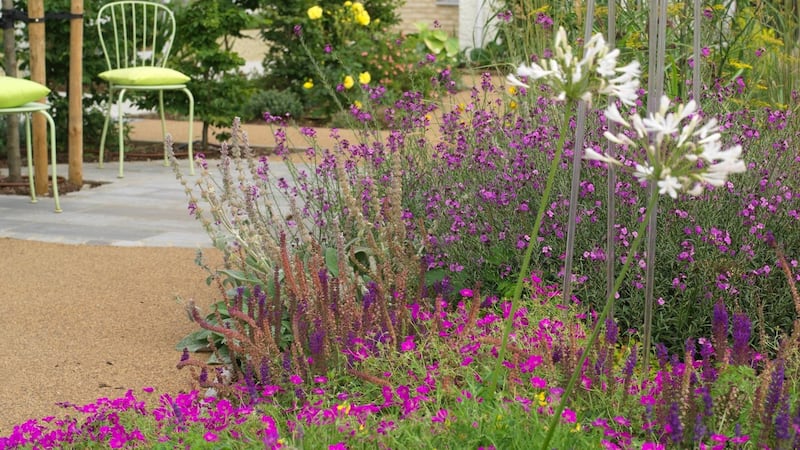
“This is my local hospice and so I approached it from the point of view that I myself might possibly be a patient here one day.”
One of the people who offered her sound advice was Eileen Nolan, the National Botanic Gardens-trained horticulturist who has been grounds manager/ head gardener of the large gardens belonging to Our Lady's Hospice in Dublin for 25 years and also tends the four-acre gardens of Blackrock Hospice.
“Eileen made some really helpful suggestions, one of which was to design the garden with the nursing staff in mind so that it also becomes a therapeutic space for them.”
The resulting hospice staff garden that Angela designed – a sunny, flower-filled corner of one of the courtyards – is a tranquil and inviting place where the staff can unwind from the pressures of their work as carers. Another important piece of advice she gave Angela was to use plants that might already be known to patients and their families from their own gardens.
“When you’re sick and away from home, it’s very comforting to be surrounded by things that are familiar. So I concentrated on the kinds of plants that are widely grown in many Irish gardens and would be easily recognisable.”
There’s even a raised rectangular planter beside each private patio where patients can grow whatever they choose, yet another way of helping them and their families to personalize the garden in emotionally significant ways.
New accommodation
“Designing the garden for the families of patients to use was something that St Brigid’s director of nursing Marian McDonell emphasised to me. Sadly those families can sometimes include very young children so it was really important to make it a place that they can enjoy.”
Formerly under the management of the Friends of St Brigid's Hospice but now under the HSE, St Brigid's is due to reopen next month when the first of its patients will move into their new accommodation.
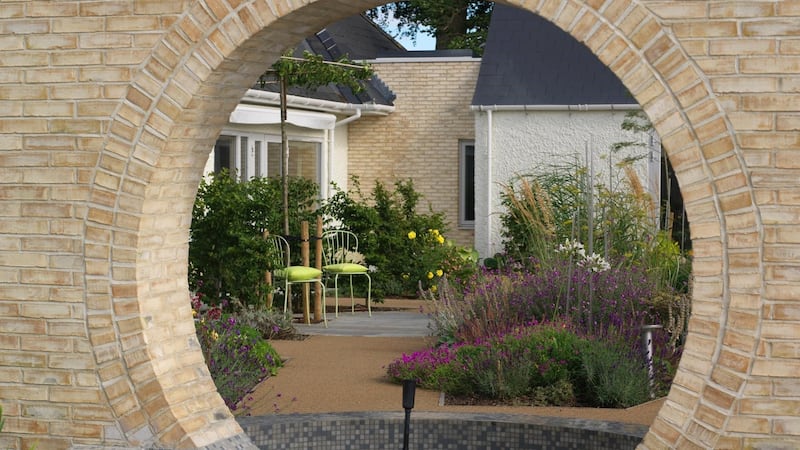
For Angela, whose husband Peter Murray-Hayden died suddenly of a heart attack late last autumn only a few weeks after she’d finished planting the garden, it marks the completion of a project that’s taken on a deep personal significance.
“Peter knew how much this project meant to me so I feel very close to him when I’m here.”
Now professionally retired, she plans to continue her involvement with this very special Irish hospice garden on a voluntary basis.
“Not only will I enjoy it but it will be my own small contribution. Because every little bit helps.”
This Week in the Garden
With many plants setting ripe seed, now is a great time to cut back traditional wildflower meadows. This sort of once-a-year haircut helps with the dispersal of seed and encourages the establishment of yellow-rattle, the small native annual plant that’s key to the success of traditional, species-rich wildflower meadows filled with a rich variety of native wildflowers such as those belonging to the Botanic Gardens of Kilmacurragh in Wicklow.
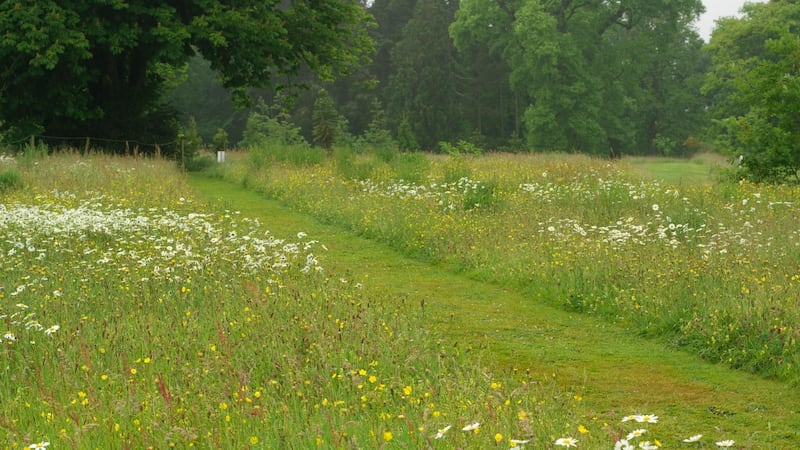
When cutting back traditional wildflower meadows, always cut back hard (to a height of 6-8cm) and then leave the cut material on the ground for a few days to allow the seed to spill before raking up the cut stems/foliage and removing it to keep soil fertility low (most wildflowers do best in soils of low fertility).
If you’re planning to establish a natural wildflower meadow, then this is also a great time to hand-harvest the ripe seed of yellow rattle, which germinates best when sown fresh.
Try to avoid leaving recently-cleared beds in the allotment or kitchen garden empty at this time of year as they’ll quickly become colonized by weeds while the soil’s nutrients will be leached by autumn/winter rainfall. A far better option is to sow them with green manure, a very useful way of replenishing soil fertility and improving soil structure without going to all the hard work of barrowing in lots of heavy, bulky organic matter.
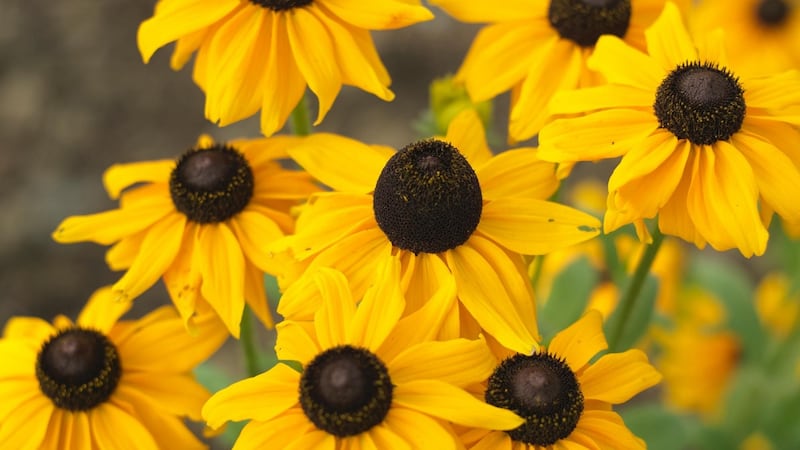
Another advantage is that green manures also do a great job of suppressing weed growth. While there are many different kinds, varieties suitable for sowing at this time of year include phacelia, grazing rye, vetch.
Many gardens begin to sink into the doldrums at this time of year so if yours is one of them, then consider adding some autumn interest. Suitable plants include many types of ornamental salvias such as Savia ‘Amistad’ and Salvia ‘Love & Kisses’, helenium, crocosmia, sedum, Japanese anemone, aster, dahlia and rudbeckia. Ornamental shrubs and trees that come into their own at this time of year including different varieties of sorbus, caryopteris and hydrangea.
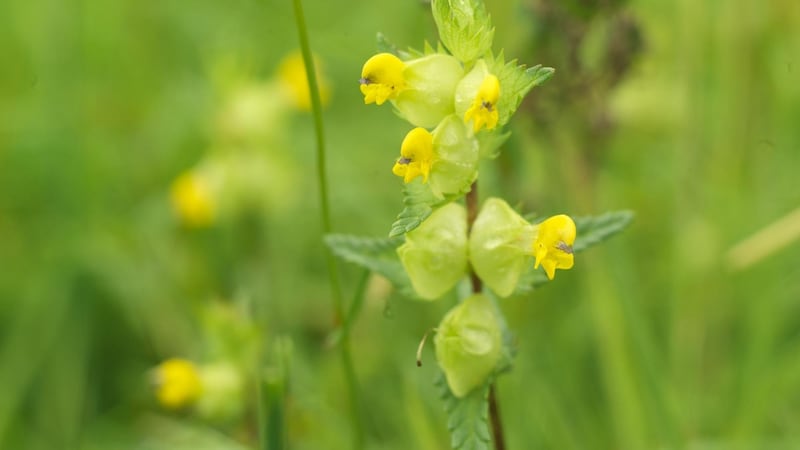
Dates For Your Diary
Saturday, August 25th
Delgany & District Horticultural Society Annual Dahlia Show
See delganydhs.com for details
3pm-5pm, St Patrick's National School, Church Road, Greystones, Co Wicklow
Wednesday, August 29th
Painting in the Garden: a one-day workshop with landscape artist Fergal Flanagan, €70 including lunch/refreshments, see thebaygarden.com for booking details
10am-5pm, The Bay Garden, Camolin, Enniscorthy, Co. Wexford,
Saturday, September 1st
Howth & Sutton Horticultural Society Annual Show with plants exhibits, plant sales and expert garden advice, see hshs.ie for details
2.30pm-4.30pm, St Nessan's Community School, Moyclare Road, Baldoyle, Dublin 13,












